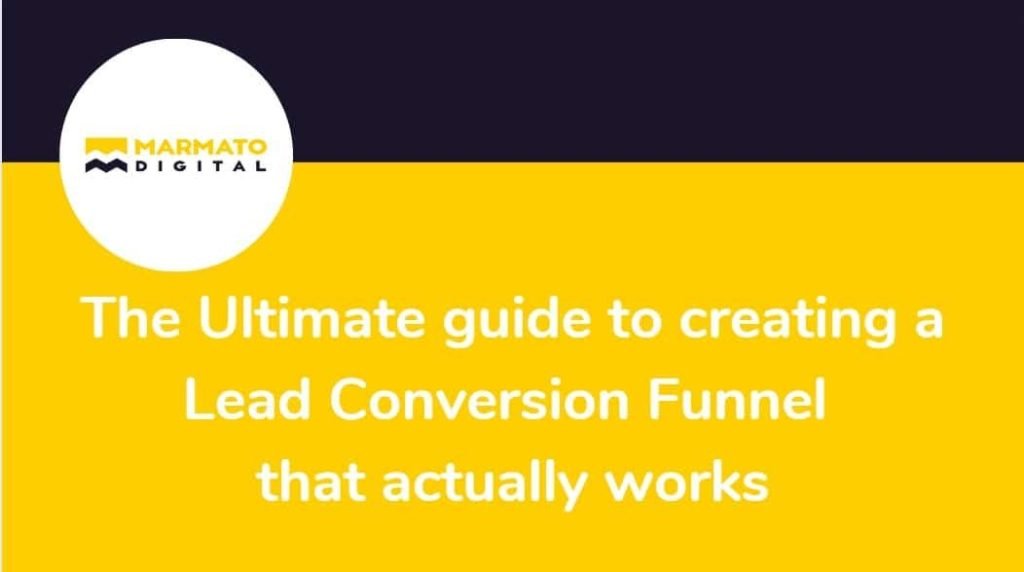In the competitive business world, converting leads into loyal customers is the key to sustainable growth and success. For converting leads to customers, it is essential to build an effective lead conversion funnel. A lead conversion funnel is a systematic approach that guides potential customers through various stages, ultimately converting them into paying customers.

What is a Lead Conversion Funnel?
A lead conversion funnel is a strategic process that guides potential customers through various stages to convert them into paying customers. It works by capturing leads, nurturing them, and leading them toward making a purchase. Let’s dive deeper and understand the lead conversion funnel and its working.
The funnel consists of several stages, from creating awareness about the product or service to providing value through content, nurturing relationships with potential buyers, and finally converting them into paying customers. Each stage plays a vital role in the success of the lead conversion funnel.
By understanding how a lead conversion funnel works, businesses can optimize their marketing efforts to maximize their ROI. Additionally, they get more qualified leads in the shortest time possible.
Understanding the Lead Conversion Funnel:
Imagine a funnel-shaped structure. At the top of the funnel, you have a wide opening where you attract many potential customers, also known as leads. As these leads move down the funnel, the number narrows down, as only a portion of them will convert into customers. The funnel represents the journey that leads take, from being aware of your business to becoming paying customers.
Stages of a Lead Conversion Funnel
Awareness:
At the top of the funnel, your goal is to create awareness and attract the attention of potential customers. You can achieve this through various marketing channels such as advertising, content marketing, social media, and search engine optimization. The aim is to capture the interest of as many leads as possible.
Interest and Engagement:
Once leads know your business, you want to engage and nurture them. Provide valuable content, educational resources, and incentives to keep them interested. This stage involves building trust, establishing your expertise, and addressing their pain points.
Evaluation and Decision:
As leads progress further down the funnel, they enter the evaluation stage. Here, they compare your offerings with competitors, read reviews, and seek additional information. It’s crucial to provide compelling reasons why your product or service is the best choice for them.
Conversion:
At the bottom of the funnel, the goal is to convert leads into paying customers. This is where you present irresistible offers, provide a seamless purchasing experience, and employ effective call-to-action strategies. Make it easy for the leads to take the desired action, whether it’s making a purchase, signing up for a trial, or requesting a consultation.
Retention and Upselling:
Once a lead becomes a customer, the journey doesn’t end. The lead conversion funnel also focuses on retaining customers and maximizing their value. Provide exceptional customer service, continue delivering value through additional products or services, and encourage repeat purchases and referrals.
How the Lead Conversion Funnel Works?
The lead conversion funnel operates by guiding leads through each stage, strategically addressing their needs, and overcoming any obstacles that may arise. It relies on effective marketing strategies, compelling content, personalized communication, and a seamless sales process. By understanding your target audience, capturing their interest, nurturing relationships, and presenting irresistible offers, you increase the likelihood of converting leads into loyal customers.
Steps to build an effective Lead Conversion Funnel
With the appropriate lead conversion funnel, businesses can increase their sales and grow their customer base. Creating an effective conversion funnel is key to increasing conversions and driving growth for any business.
This guide will provide a step-by-step guide on how to build an effective lead conversion funnel from scratch. Finally, this will help you reach your goals and maximize your ROI. So, let’s get started!
Understand Your Target Audience:
The foundation of a successful lead conversion funnel lies in understanding your target audience. This knowledge will help you tailor your funnel to their specific requirements, increasing the chances of conversion.
Define Clear Goals:
Set clear goals for your lead conversion funnel. Whether it’s generating a certain number of leads, increasing sales, or improving customer engagement, having specific goals allows you to measure success and make necessary adjustments along the way.
Create Compelling Lead Magnets:
To attract potential customers, offer valuable content or incentives in exchange for their contact information. These could include e-books, whitepapers, webinars, or exclusive discounts.
Design Engaging Landing Pages:
Landing pages are crucial elements of a lead conversion funnel. Create visually appealing and user-friendly landing pages that highlight the benefits of your offering and capture visitors’ attention. Use persuasive copy, clear call-to-action buttons, and minimal form fields to optimize conversions.
Implement Effective Lead Nurturing:
Once you have captured leads, nurture them through targeted email campaigns, personalized content, and social media engagement. Provide valuable information, address their concerns, and establish trust. This continuous engagement keeps your brand top-of-mind and increases the likelihood of conversion.
Employ Lead Scoring Techniques:
Not all leads are equal. Implement lead-scoring techniques to prioritize and focus on the most qualified leads. Assign values based on their actions, such as opening emails, clicking links, or visiting specific web pages. This enables you to identify highly engaged leads ready for conversion.
Optimize Your Sales Process:
Streamline your sales process to ensure a smooth transition from lead to customer. Provide your sales team with the necessary tools and training to effectively convert leads. Implement customer relationship management (CRM) software to track interactions, monitor progress, and personalize the sales approach.
Test, Analyze, and Refine:
Regularly test different elements of your lead conversion funnel, such as headlines, CTAs, landing page layouts, or email subject lines. Analyze the results and identify areas for improvement. A/B testing can help optimize conversion rates and fine-tune your funnel over time.
Monitor Key Metrics:
Track key metrics such as conversion rates, customer acquisition costs, and lifetime value. These metrics provide insights into the effectiveness of your lead conversion funnel. Monitor them closely to identify trends, spot bottlenecks, and make data-driven decisions to optimize your funnel further.
Continuously Adapt and Evolve:
The digital landscape and consumer behaviors are constantly changing. Stay up-to-date with the latest trends and adapt your lead funnel accordingly. Embrace new technologies, explore emerging marketing channels, and always strive to enhance the customer experience.
Optimize Lead Conversion Funnel for maximum results:
Optimizing your lead conversion funnel is essential for achieving maximum results from your marketing and sales efforts. By optimizing your funnel, you can ensure that you use the appropriate tactics to reach the right customers and convert them into loyal customers.
You can use data-driven insights to identify areas of improvement to improve results. Additionally, understanding the working of the steps in the funnel will help you create a more effective overall strategy.
It’s crucial to monitor the key metrics, such as conversion rates, customer acquisition cost, and customer lifetime value, to ensure that the lead conversion funnel works effectively. Analyze the data, identify areas for improvement, and make necessary adjustments to optimize the funnel. Continuous testing, refining, and adapting to changes in the market will help you maximize the conversion potential of your funnel.
In the end, remember it’s a dynamic process, so keep experimenting, learning, and adapting to achieve optimal results and drive your business toward success.
Need help in creating a Lead Conversion Funnel that works?
Creating an effective lead conversion funnel requires careful planning, understanding your audience, and continuous optimization. Marmato Digital can help you with building a lead conversion funnel that works. Let’s get started now!
Subscribe to blogs
Get our latest blogs directly to your inbox.

